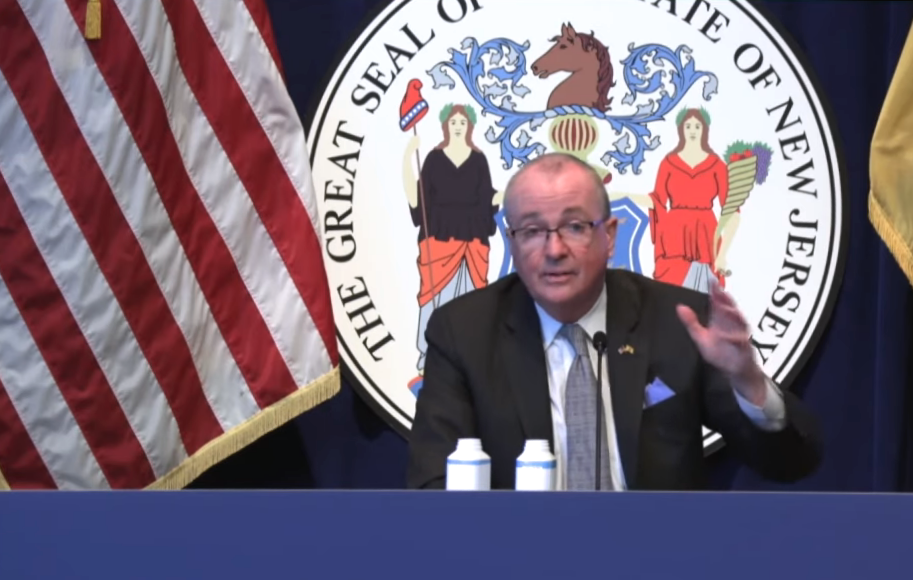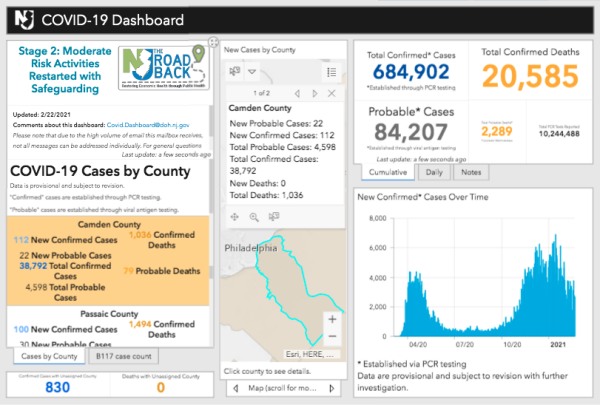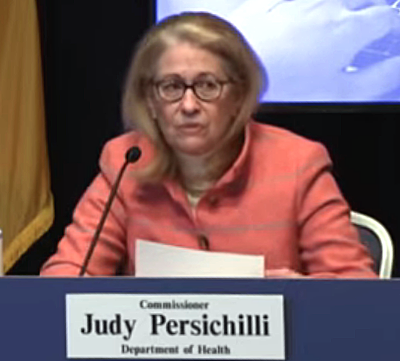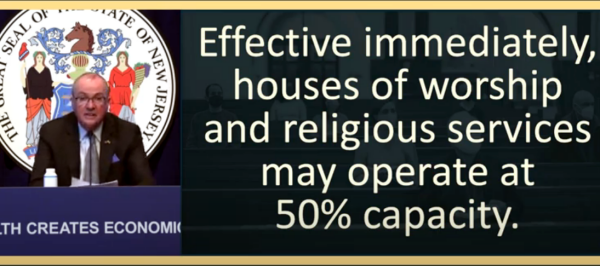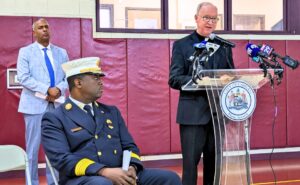Plus: New Jersey is expected to receive last week’s storm-delayed vaccine shipments today, and updates on vaccinations of elderly residents.
By Matt Skoufalos | February 22, 2021
Another 2,165 New Jersey residents have tested positive for novel coronavirus (COVID-19), bringing the statewide total to 684,902 cases confirmed via polymerase chain reaction (PCR) testing, Governor Phil Murphy reported Monday.
New Jersey is also reporting 682 new COVID-probable cases based on antigen tests, bringing the statewide total to 84,207 positive antigen tests.
Antigen tests have a faster turnaround time than PCR tests—sometime within 15 to 30 minutes—but are less reliable at detecting active infection of the virus and more capable of reporting false positives.
Sadly, 17 more residents have perished from complications related to the virus, bringing the statewide, confirmed death toll to 20,585 lives lost during the pandemic.
In addition to those lab-confirmed fatalities, the state has acknowledged another 2,289 probable COVID-19-related deaths.
Since March 2020, 719 of every 100,000 New Jersey residents have been hospitalized with COVID-19, and 234 of every 100,000 have died from COVID-19-related complications.
More than 10.24 million polymerase chain reaction (PCR) tests for COVID-19 have been performed statewide, with a 7.79-percent positivity rate per 100,000 residents.
Rate of transmission (Rt) at 0.86, spot positivity highest in South Jersey
The statewide average of COVID-19 spot positivity testing based on PCR test results stood at 6.35 percent February 18; in South Jersey, it was highest, at 7.14 percent.
Rt, the variable that describes the seven-day, rolling-average, statewide rate of transmission of new COVID-19 cases, hit 0.86 from samples taken February 20.
An Rt figure greater than 1.0 means that each new COVID-19 patient is infecting more than one other person, on average, and the spread of the virus is increasing.
Since its mid-April COVID-19 spike, the highest reported RT in New Jersey was 1.48, recorded August 1. The lowest was 0.62, recorded June 9.
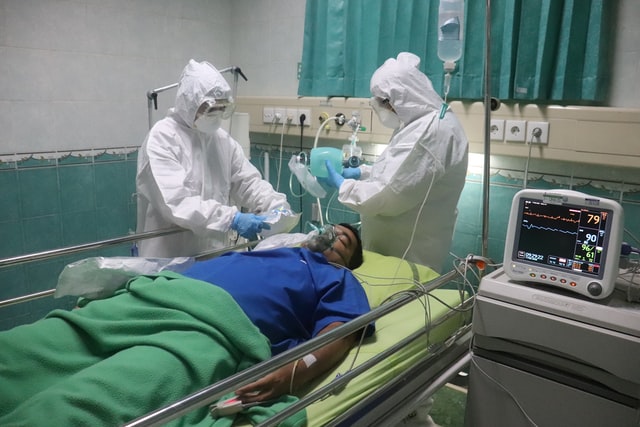
Simulated COVID-19 patient in a hospital bed. Photo by Mufid Majnun on Unsplash
Hospitalizations continue to trend downward
Throughout New Jersey, 2,023 people currently are hospitalized with a suspected (135) or confirmed (1,888) case of COVID-19, Murphy said.
Among those hospitalized patients, 438 are in intensive or critical care, and 289 of the ICU and critical-care patients (66 percent) are on ventilators.
In New Jersey’s 71 critical care hospitals, 198 patients were hospitalized with COVID-19 yesterday, while 186 others were discharged.
Across the state, long-term care (LTC) centers have reported 1,255 cumulative outbreaks of COVID-19, and 372 are dealing with an active outbreak. LTCs account for 53,087 infected patients and staff in New Jersey, or 7.8 percent of total cases.
That includes 32,188 residents and 20,899 staffers sickened by the virus, as well as 7,884 lab-confirmed resident and staff deaths (38 percent of the statewide confirmed total), with facilities self-reporting 143 staff deaths.
Of 656 veterans residing in three state-run homes, 439 residents have tested positive for COVID-19, and 155 have died from complications related to the virus.
Eight veterans presently are hospitalized with COVID-19, and 295 have recovered from the virus.
MISC cases and schools
At state-run psychiatric facilities, 332 of 1,151 patients and 935 staff members have tested positive for COVID-19.
Fourteen patients and eight staffers have died from complications related to the virus.
To date, 95 New Jersey children aged 1 to 18 have been diagnosed with pediatric multisystem inflammatory syndrome (MISC), according to New Jersey Health Commissioner Judy Persichilli—three more than previously reported.
All those pediatric patients have tested positive for an active COVID-19 infection or the presence of COVID-19 antibodies, indicating exposure to the virus.
No deaths have been associated with this syndrome in New Jersey, although several children have been hospitalized during their treatment, and one currently is.
Since August 1, 144 COVID-19 outbreaks encompassing 686 individual cases have been traced to schools in 19 New Jersey counties. In Camden County, 14 outbreaks have been linked to 70 cases, second-most in the state.
Finally, Persichilli reported that the 53rd case of the B.1.1.7 COVID-19 variant (“the UK variant”) has been detected in New Jersey. The variant is believed to be more highly transmissible, but not any deadlier than the dominant strain of the virus that has been detected across the United States.
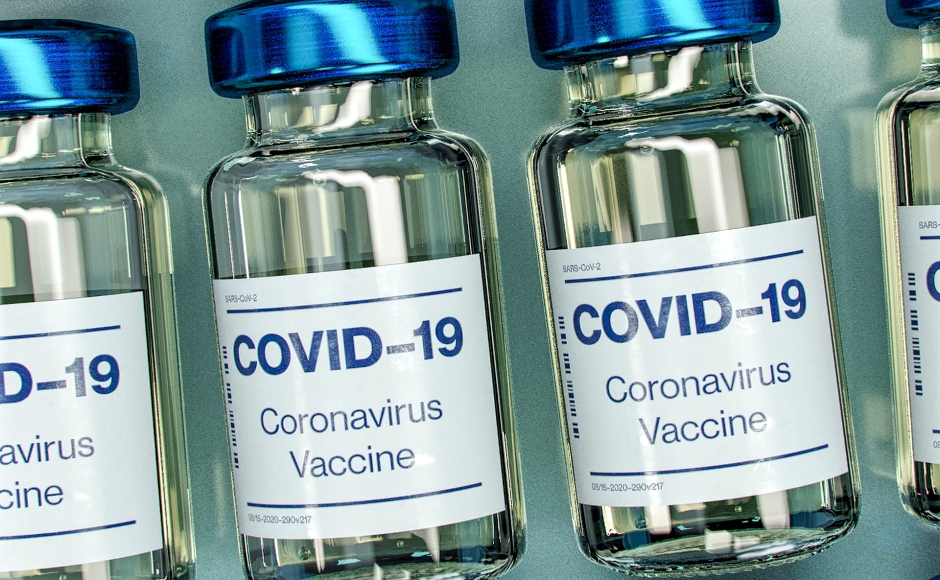
COVID-19 vaccine bottle mock-up. Photo by Daniel Schludi on Unsplash
Vaccination update
Across New Jersey overall, 1.67 million vaccinations have been administered to date: 1.137 million first doses, and 509,373 second doses.
Of those, 96,923 have been administered in Camden County, seventh-most in the state.
Vaccine deliveries that had been delayed by winter weather last week were anticipated in New Jersey on Monday, Murphy said, as well as about half the supply of Moderna vaccines for this week.
Persichilli reported that although the demand for vaccines exceeds the available supply, officials have been distributing immunizations to some of the most vulnerable populations in the state.
About 33 percent of adults 80 and older, which account for 47 percent of COVID-related deaths in New Jersey, have received at least one vaccine dose; 13 percent have gotten both shots. Another 33 percent of those aged 65 to 79 (35 percent of COVID-related deaths in the state) have received at least one vaccine dose.
Capacity limits increased for religious services, collegiate sports, large entertainment venues
The biggest announcement from the governor today came in the form of expanded capacity limits at gatherings for religious, athletic, and performance events.
Effective immediately, religious services and houses of worship may operate at 50 percent of indoor capacity. Congregants will be required to mask up and maintain a six-feet distance from other households. Centers of worship can choose to limit gatherings to less than the 50-percent total if they feel it’s necessary to do so.
Similarly, college athletes may begin welcoming two parents or guardians as spectators at indoor and outdoor practices and competitions, up to 35 percent of venue capacity. All attendees must adhere to social-distancing and masking protocols, and conferences retain the right to impose stricter gathering limits as they see fit.
Finally, sports and entertainment venues with a fixed seating capacity of more than 5,000 people may reopen to limited attendance starting March 1. Indoor venues may operate at 10 percent of capacity, and outdoor venues may operate at 15 percent of capacity. Face coverings must be worn at all times, except when eating and drinking, and all groups must sit at least six feet from one another.
The governor hinted that the changes were made in response to improving pandemic conditions.
“Should the numbers we track every day continue to go down, we hope and expect to be able to continue to raise these capacity limits as we approach the summer and fall,” Murphy said. “I’m also hopeful that, as we move forward, we’ll be able to open up more of our economy as well.”

